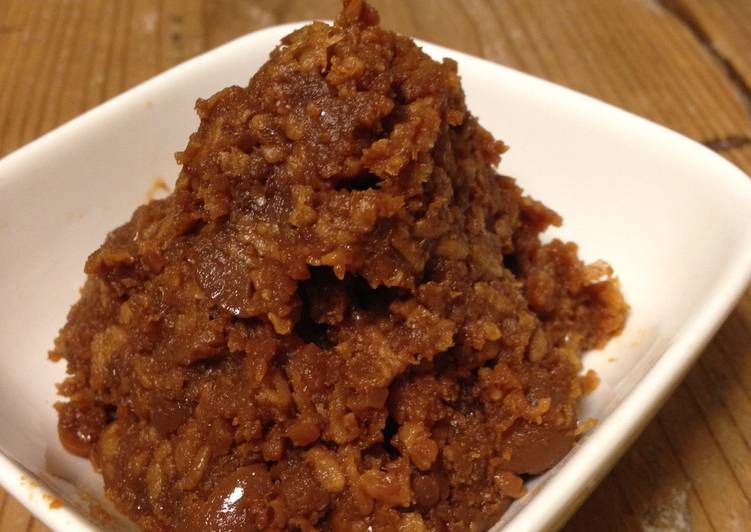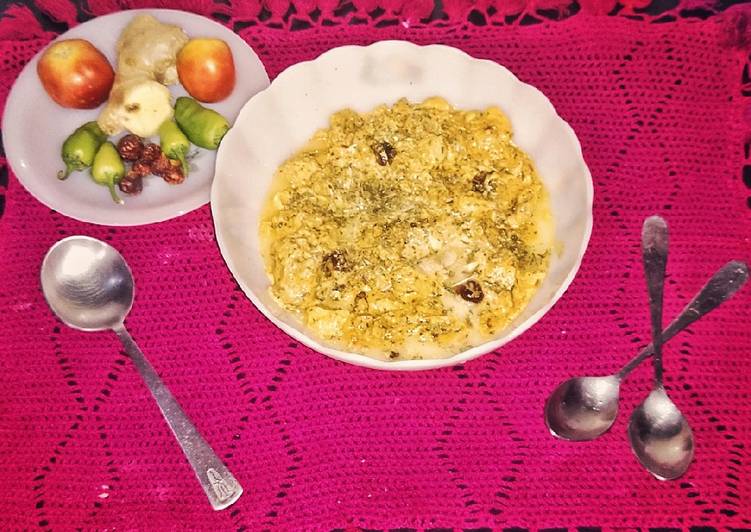
Hey everyone, hope you are having an incredible day today. Today, I will show you a way to make a special dish, homemade miso paste. One of my favorites. This time, I am going to make it a bit unique. This is gonna smell and look delicious.
Today, I will be showing how to make Miso. Miso is one of the essential seasonings in Japanese cuisine as you already know. Stuff this paste tightly into your fermentation vat of choice to remove any air.
Homemade Miso Paste is one of the most favored of recent trending foods in the world. It’s simple, it’s quick, it tastes delicious. It’s enjoyed by millions daily. They’re fine and they look fantastic. Homemade Miso Paste is something that I’ve loved my entire life.
To get started with this particular recipe, we must prepare a few ingredients. You can have homemade miso paste using 8 ingredients and 16 steps. Here is how you cook it.
The ingredients needed to make Homemade Miso Paste:
- Get 500 g soy beans
- Take 500 g Kouji
- Get 250 g Salt (see note below on how to calculate the exact amount)
- Prepare Tools:
- Get 1 bucket or container that can hold 3 liters
- Make ready 1 sturdy and clean plastic bag that is big enough to line the bucket
- Take 1-1 1/2 kg weight for weighing dough miso
- Make ready 1 inner lid that can fit inside the bucket - it will be used to put on top of miso to hold the weight
But of course, I prefer homemade miso paste. The preparation season is from Feb. to Mar. and Sep. to Oct. to be ready to eat. Miso is a delicious, pungent, thick paste that is used to flavor soups, sauces, and The finished miso will be a thick paste, about the consistency of mashed potatoes. (Other than making miso soup?) There's more to miso than soup. My simple step-by-step instructions will guide you through this process.
Steps to make Homemade Miso Paste:
- You should wash soy beans, and soak soy beans about 14~24 hours. Use 4 times the amount of soy beans for the soaking water.
- After soaking, soybeans look like this.
- Boil the soybeans in plenty of water for about 4 hours.
- When you can easily mash a soy bean between two fingers, it's done! Next you should mash soybeans very well.
- The soybeans look like this after mashing.
- After mashing, weigh the miso so you can calculate exactly how much salt to use (next step)
- Add the weight of soybeans by the weight of koji (here it's 500 g). Multiply that number by 0.12, then divide by 0.88. - - Salt = (weight of mashed soybeans + weight of koji) x 0.12 / 0.88
- Set aside 10% of the salt for sprinkling on top later on. The remaining 90% will be mixed with the koji in the next step.
- Mix the koji and salt well. Then mix in the mashed soybeans very well.
- Make miso-dama - it means miso ball! Make miso balls by tightly squeezing the mix in the palms of your hand. They should be firm and not fall apart.
- Put the balls in a big container lined with a clean plastic bag, and "punch" your miso down! You need to punch out the air, so make sure it's smashed into the container very well with now air pockets.
- Make the top of the miso level.
- Sprinkle with a little salt.
- Wrap an "inner lid" with plastic wrap and put on top of the miso paste. I used a round plastic piece the same size as my container.
- Put a heavy weight on top.
- Wrap up and close the plastic liner bag so it's inside the container. Cover the container with a lid and say good night! See you next year! It takes one year to finish fermenting, but you should check your miso after summer. If your miso smells bad, you should remove any mold and mix up miso! Smash it back down again, put the weight on and finish fermenting.
Homemade Spicy Ramen recipe with an easy spicy miso paste for the broth and dry ramen There is a good chance you can find miso paste at the right grocery store, and the tofu press is sort of just an. Make your very own Japanese miso soup from scratch. Homemade Miso Soup. this link is to an external site that may or may not meet accessibility guidelines. Miso reigns supreme in terms of versatility. (Not to mention longevity—most misos can keep up for Because what's miso without miso soup? The pre-dinner soup at Japanese restaurants is a super.
So that’s going to wrap this up for this special food homemade miso paste recipe. Thanks so much for your time. I’m sure that you can make this at home. There is gonna be interesting food in home recipes coming up. Don’t forget to bookmark this page in your browser, and share it to your loved ones, colleague and friends. Thank you for reading. Go on get cooking!

